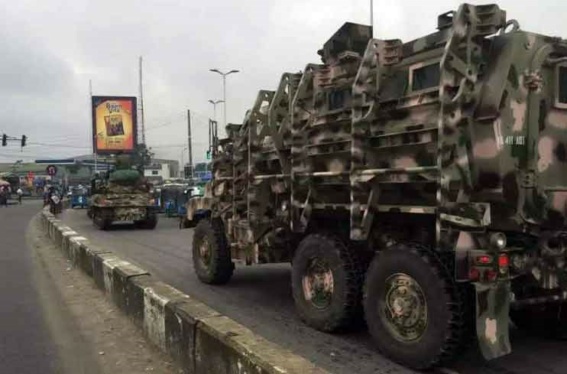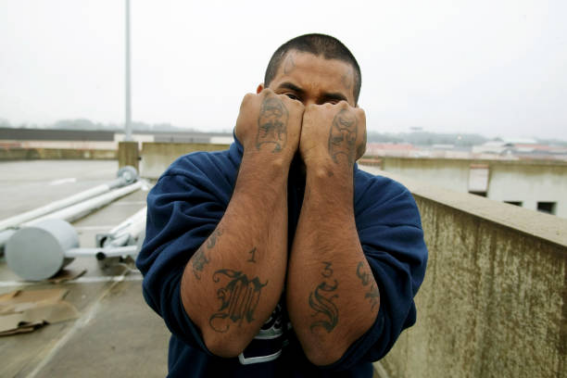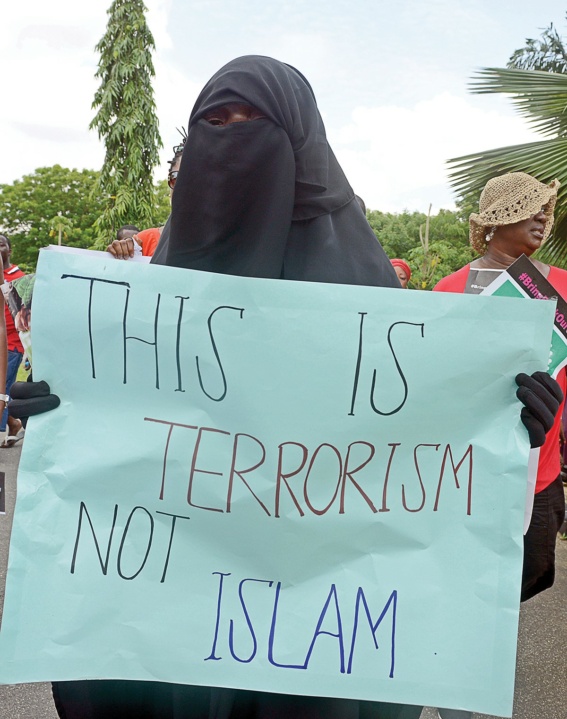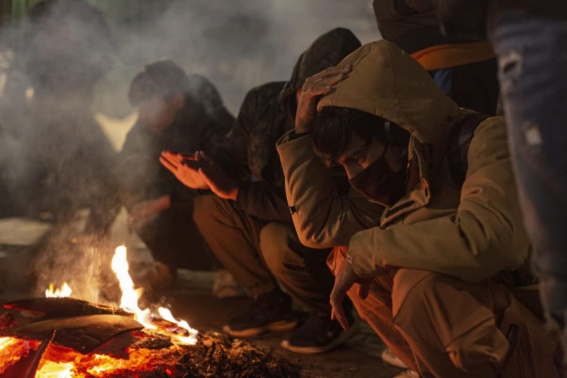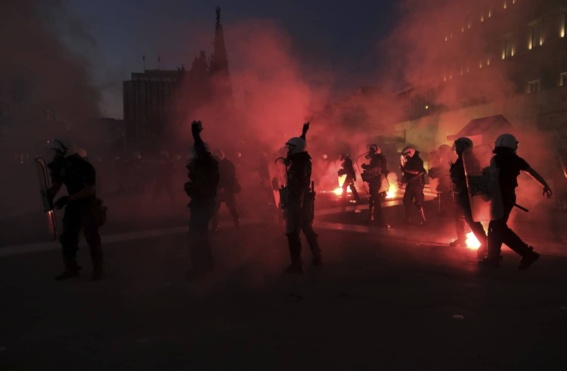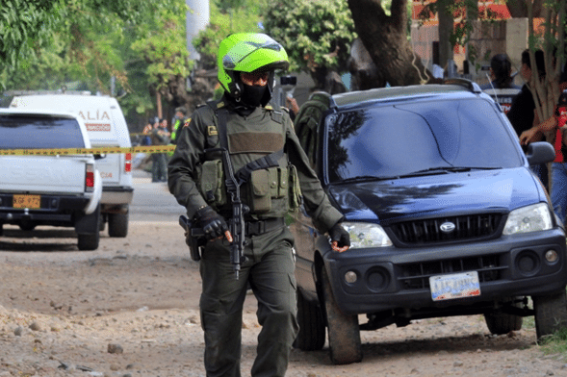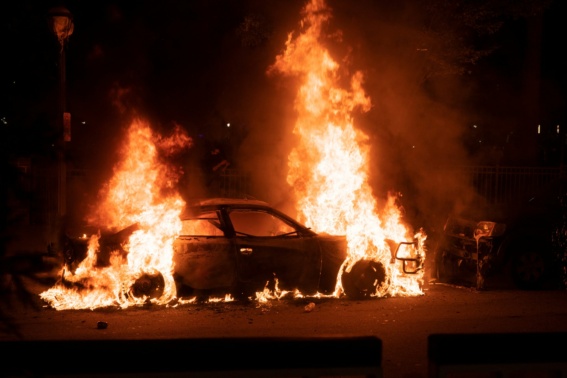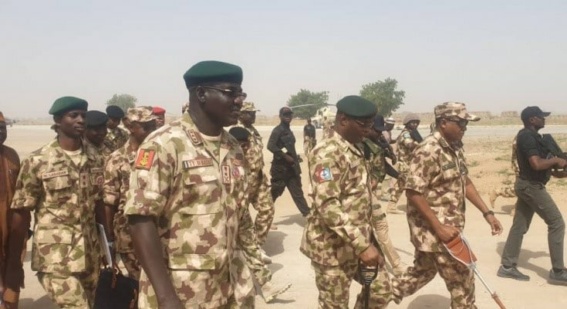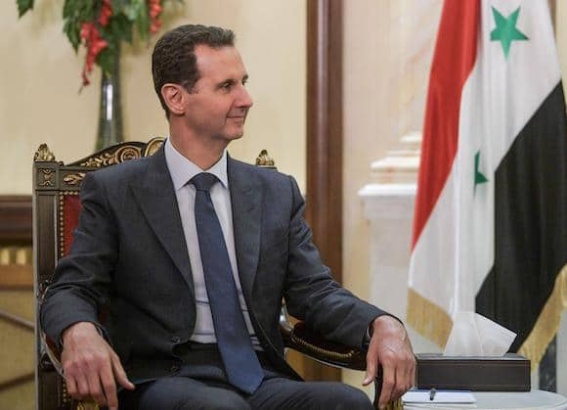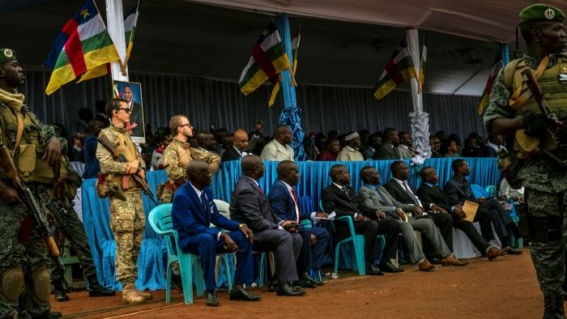The COVID-19 pandemic has upended human society across the world. Over the last two years, governments have sought to control the impact of the virus by introducing a range of new laws and policies, including lockdowns, public health mandates, and restrictions on social gatherings. They have also initiated the largest global vaccine rollout in human history, pioneering a new era of mRNA vaccine technology.
Governments, researchers, and security experts have warned that the pandemic, and the various strategies implemented by governments in their efforts to contain it, is fueling extremism.
The pandemic has been a source of profound stress, instability, and disruption for individuals and communities. School closures, precarious employment, housing challenges, and the increasing cost of living have placed a heavy burden on many people.
The physical isolation imposed by lockdowns, social restrictions, and other public health measures has fueled a dramatic rise in mental health issues, and has led to a substantial increase in online engagement, producing “a perfect storm” for extremist radicalization, according to the UK’s Head of Counter Terrorism Policing.
A Gift for Extremists
A new report by the United Nations’ Counter-Terrorism Committee Executive Directorate (CTED), published on 17 December 2021, provides an overview of COVID-19’s impact on global terrorism. The report warns that violent extremists have “sought to exploit pandemic-related sociocultural restrictions that have led people around the world to spend increasing time online, by strengthening their efforts to spread propaganda, recruit, and radicalize via virtual platforms.”
The report also emphasizes that “as new pandemic-related social restrictions result in closures of educational institutions, reduced employment and entertainment opportunities, and curtailed community programs, there are concerns that resilience against violent extremism conducive to terrorism in fragile communities might be reduced, thereby making individuals more vulnerable to radicalization in such settings.”
Michelle Grossman, a researcher at the Center for Research and Evidence on Security Threats, has described how the pandemic has been weaponized by extremist actors in their efforts to “to attack and undermine democratic systems and institutions, enhance social and political polarization, destabilize truth consensus and accelerate violent civil unrest.”
Frequently, these efforts take the form of dis- and misinformation campaigns designed to promote pandemic-led conspiracy thinking. For these campaigns, “the pandemic was a gift,” according to Grossman, “swiftly weaponised and deployed by those who seek to escalate violent conflict”. The efforts of these extremist actors have “been significantly aided by the ways in which the physical social isolation imposed by public health efforts to mitigate pandemic risks has been offset by increased online social engagement, as people seek to maintain both social connection and access to sense-making information that helps organize their experience of social chaos and upheaval.”
Indeed, according to CTED’s report, “pandemic-related conspiracy theories and mis/dis-information will continue to fuel a situation that is conducive to societal divisions…terrorist groups across ideological spectrums are already seeking to exploit alienation and grievances rising from pandemic-related measures and perceived State excesses by weaponizing those divisions.”
A Catalyst for Radicalization
A recent study, published on 17 December 2021 by the Institute for Strategic Dialogue, has found that pandemic-led conspiracy theories and mis/dis-information have become central to the online recruitment efforts of the far right and other extreme right-wing communities.
“COVID-19 has served as a catalyst for radicalization,” said the study’s author, Ciaran O’Connor, an expert in disinformation and online extremism. “It allows conspiracy theorists or extremists to create simple narratives, framing it as us versus them, good versus evil.”
The study analyzed around half a million messages across more than 200 Telegram channels associated with right-wing extremism. Telegram is an online messaging service that has become a popular platform for the far-right due its limited content moderation. The researchers found that around 70% of the channels they monitored discussed COVID-19 between January 2020 and June 2021; and that 90% of the most viewed posts from far-right groups contained misinformation regarding COVID-19 vaccines or the pharmaceutical companies manufacturing them. One Telegram channel saw its subscriber count increase tenfold after it began disseminating COVID-19 conspiracy theories.
Much of the COVID-19 misinformation promoted by far-right groups was underpinned by white supremacist ideologies and other racist belief systems, including anti-Semitism and Islamophobia. Indeed, the study found consistent crossover in topic relevancy between white supremacist and conspiracy communities on Telegram when discussing the pandemic and identified two prominent far-right extremists involved in running a COVID-19 conspiracy channel. This channel, which receives around half a million daily views, was found to serve as a COVID-19 pandemic hub for other conspiracy and extremist channels, including at least three white supremacist channels.
“COVID-19 has created fertile ground for recruitment because so many people around the world feel unsettled,” said Cynthia Miller-Idress, director of the Polarization and Extremism Research and Innovation Lab at the American University. “These racist conspiracy theories give people a sense of control, a sense of power over events that make people feel powerless.”
The study’s findings are particularly concerning given the various incidents and attacks around the world that suggest some extremists are transitioning from online engagement to real-world action. Pandemic-driven social unrest has already been linked to the increased targeting of minority communities, including a surge in Asian-American hate crime and anti-Semitism. It has also provoked violent riots across the world, several of which have involved injury and even death. Misinformation and conspiracy theories have also motivated individuals to destroy vaccine vials, damage communications infrastructure, and to arm anti-vaccine and anti-government propaganda posters with hidden razor blades.
The Long-Term Effects
The concern for many security experts is whether the cessation or moderation of the pandemic will dampen the extremist threat it has fueled, and to what extent extremist groups will retain the support of those they have recruited through their propagation of pandemic-led conspiracy theories.
Moreover, the question should be asked, according to Michelle Grossman, as to whether “the longer-term social, economic and political impacts of the pandemic, which may well outlast the immediate public health crisis, [will] provide fertile ground for continuing political and social polarisation that extremists can channel toward violent action?”
CTED’s report specifically warns against “the proliferation of emergency measures and the curtailing of civil liberties” which “if left unchecked,” the report says, “has the potential to exacerbate existing grievances and may be exploited by terrorist and violent extremists.”
According to Grossman, the extension of government authority and the enforcement of public health measures throughout the pandemic “have been consistently reframed by extremists as instruments of social control, government corruption and state illegitimacy”. Indeed, the CTED report states that governments “need to ensure that pandemic-related social restrictions, including restrictions of human rights through the use of emergency powers, are strictly required by the exigencies of the situation, implemented fairly in a non-discriminatory manner and, most importantly, temporally limited.”
Conclusions
The COVID-19 pandemic has caused unparalleled social upheaval, and has subjected individuals, communities, and nations around the world to a host of new challenges and stresses. Governments, the private sector, and civil society organizations must work together to combat the virus, mitigate its consequences, and prevent its exploitation by extremist actors.
The pandemic has exacerbated social inequality and exposed a range of structural problems. These social divides are preyed on by extremist actors, who exploit fragile communities and vulnerable individuals to recruit support for their cause. Efforts must be made to remedy these divides, and to cut off support for extremist narratives rooted in the social and economic grievances fueled by the pandemic.
Efforts should also be made to maintain enlightened online discourse. Eroding trust in governments, media, and institutions fuel conspiracy thinking and empower disinformation campaigns. Restoring this trust is vital in order to combat the spread of extremist narratives online and prevent extremist recruitment strategies based on government mistrust and institutional corruption.
Governments must continue to uphold human rights in their development and implementation of pandemic-mitigation policies and must work to avoid inflaming grievances by suppressing individual liberties. To this end, states must ensure that pandemic-related restrictions and public health measures are strictly required, and that their implementation is fair and, most importantly, temporary.
Oliver Alexander Crisp, Counter-Terrorism Research Fellow

